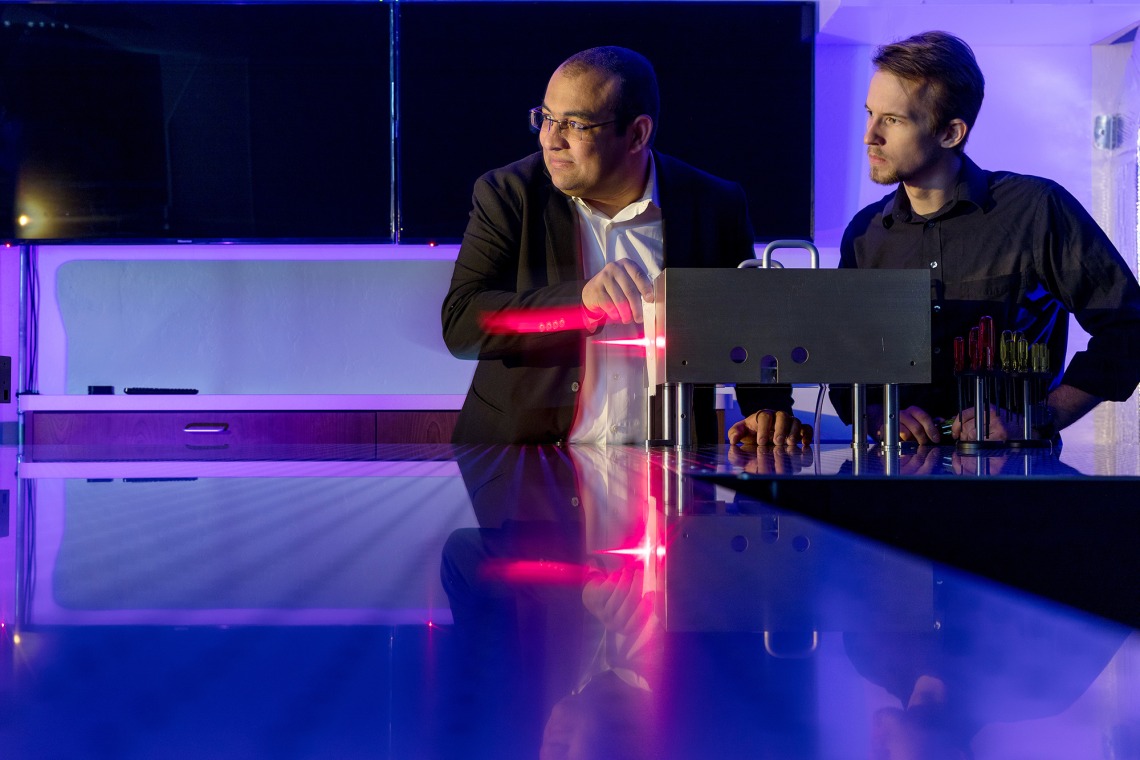Professor Prepares to Build the ‘Fastest Camera Ever’
Foundation’s support provides opportunity to image electrons in motion

Mohammed Hassan and Ian Marsh work with an attosecond light field synthesizer
Mohammed Hassan is already recognized by Guinness World Records for generating the shortest pulse of visible light. Now he wants to make the University of Arizona the first place where an electron in motion is photographed.
Thanks to a two-year, $1.3 million research grant from the Gordon and Betty Moore Foundation, Hassan will soon develop an attosecond electron imaging camera and supporting infrastructure. An attosecond is one-quintillionth of a second.
“I am so grateful to the Gordon and Betty Moore Foundation. Their support is crucial to developing the fastest camera ever to image electron motion in action,” says Hassan, an assistant professor of physics and optical sciences who also is a member of the UA BIO5 Institute.
Hassan’s previous breakthroughs have been published in leading journals, including Nature and Science. His new research will use laser technology to reveal insights about the behavior of electrons under different circumstances.
That understanding is the first step toward controlling electrons, says Ian Marsh, a doctoral student working with Hassan. Potential applications range from development of improved medicines to much faster and more efficient electronic devices.
The Moore Foundation grant funds Marsh’s position as well as those of doctoral student Islam Shalaby and a post-doctoral researcher soon to join the team. The project offers unique opportunities for Marsh and Shalaby.
“We’re responsible for putting everything together. We’ll know how everything works, down to the smallest detail. That’s a powerful thing when doing research,” Marsh says.
Once the new equipment is in place, helping Hassan conduct the research will provide solid training whether the students remain in academia or work in industry.
“This is a chance for Ian and Islam to experience the best of the technology part and the science part,” Hassan says.
The grant marks a turning point in Hassan’s own career, he says.
“This type of cutting-edge science requires support. Without the Gordon and Betty Moore Foundation, my dream of imaging electron motion could be postponed for some time. Now I’m able to do it.”
